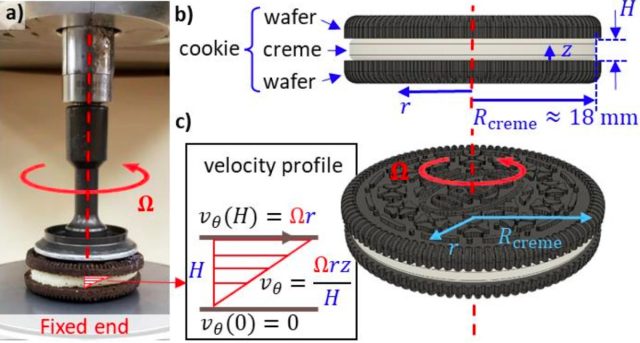Everyone has their preferred method of snacking on the cookies, which is to twist the two halves apart and eat the creme filling first, then dunk the chocolate wafers in a glass of milk. The creme sticks to one chocolate wafer. MIT scientists tried to understand why this is so often the case in a paper published in the journal physics of fluids. The authors playfully invoked a new scientific subfield they dubbed "Oreo" after the classic Nabisco cookie.
Crystal Owens, a graduate student at MIT, focuses on 3D printing with complex fluid inks.
Scientists have studied the structure of cheese, investigated the composition and flow of gluten-free batter and breads, and discovered why strands of honey can get so long and thin.
Advertisement
Owens credits her childhood curiosities as the inspiration for the Oreo question. She wanted to find the best way to open the cookie to get the creme inside.
Owens was studying yield stress fluids made of carbon nanotubes on the rheometer, an instrument used to characterize the flow of a substance in response to forces. The rheometer is used to measure the fluid's viscosity.
Owens et al. wrote in their paper that the cookies are an example of parallel plate rheometry and that the creme is the fluid sample. The creme will shear and flow before fracturing as the two wafers come apart.
Advertisement
Owens and her co-authors bought some cookies for their experiments. They made sure to purchase regular, Double Stuf, and Mega Stuf varieties, as well as Golden, Dark Chocolate, and Team USA Olympic varieties, to test different flavors. The cookies were attached to the rheometer's parallel plates with a glue gun. They looked at how much creme ended up on each wafer after rotating one wafer relative to the other.
The experiment showed that the creme almost always comes off of one side. The pre-existing level of bond between the creme and chocolate wafers seemed to be the determining factor. Most of the time, cookies from the package within any one box are the same orientation. This suggests that it has something to do with how the cookies are manufactured and how they are stored.
The rotation rate is an important factor in whether or not the cookies break apart cleanly. It will be easier if you do it slowly.